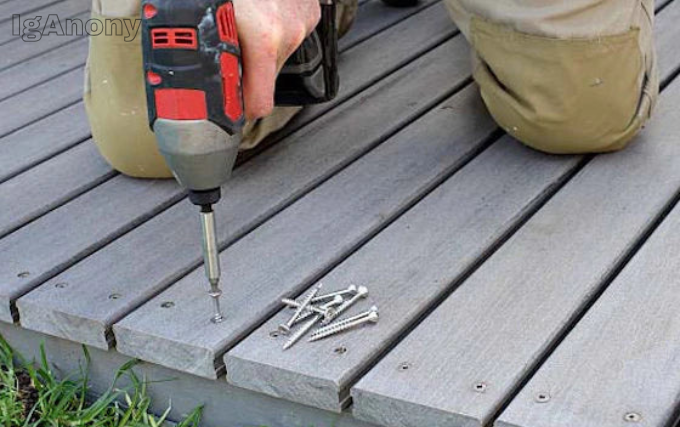When it comes to constructing a sturdy and long-lasting deck, choosing the right materials is crucial for ensuring durability and safety. Among the myriad of components required, one often overlooked yet essential item is the humble screw. Specifically, decking screws play a pivotal role in the structural integrity of decking projects. In this comprehensive guide, we delve into the importance of selecting the best screws for your decking and how they contribute to creating a secure outdoor sanctuary.
The Importance of Quality Decking Screws
Decking is exposed to various environmental stressors, including changes in temperature, humidity, and the weight of people and furniture. Quality decking screws are designed to withstand these pressures, preventing boards from warping, splitting, or coming loose over time. By ensuring that the screws are capable of holding the deck together, homeowners can have peace of mind knowing that their outdoor space is not only beautiful but also safe to enjoy.
Moreover, the right screws can be a determinant in the longevity of a deck. Opting for screws that are resistant to corrosion, such as those made with high-grade stainless steel, can significantly reduce maintenance needs and replacement costs. These resilient materials endure the onslaught of the elements, ensuring your decking remains secure for years to come.
Choosing the Right Decking Screws
Selecting the correct type of decking screws for your project is a decision that should not be taken lightly. There are a variety of screws available on the market, each designed for specific types of decking and environmental conditions. Factors to consider include the material of your decking boards, whether the decking is hardwood or softwood, and the expected level of exposure to moisture and corrosives like saltwater.
Material Matters
The type of material a screw is made from can drastically affect its performance. Stainless steel screws are a popular choice due to their resistance to rust and corrosion. They are particularly recommended for use in areas with high humidity or close to marine environments. Coated screws are another alternative, offering additional protection from the elements for decks that are subject to harsh weather conditions.
Design and Dimensions
When it comes to screw design, features such as thread type, length, and the shape of the head should be tailored to your decking’s specific requirements. For instance, a larger gauge screw with deep threads is typically more suitable for securing thicker, denser decking materials, while smaller screws may suffice for softer wood types.
Length is equally paramount, as screws need to penetrate deep enough into the substructure to create a strong bond, but not so long that they risk protruding through the opposite side. A general rule of thumb is for screws to be at least 2.5 times the thickness of the deck boards.
Head Type and Drive
The head type of a decking screw determines how the screw will sit once it is fastened into the deck. Some screws are designed to sit flush with the surface, while others recess slightly to allow for the application of wood plugs or fillers, creating a smooth, screw-free deck surface. Additionally, the drive, or recess, of the screw head should match your tools, ensuring a secure fit and reducing the risk of stripping.
Compatibility and Performance
Matching your screws to the type of wood used in your deck can prevent issues such as chemical reaction or staining. For instance, certain woods like cedar or redwood can react with metals, leading to discoloration and damage to the wood. Choosing the right decking screws will ensure that they complement the wood without compromising the deck’s appearance or integrity.
Installation Techniques
Even the best decking screws must be installed correctly to perform their function. The following installation techniques should be adhered to:
Pre-drilling pilot holes can prevent wood from splitting, especially near the ends of boards. Additionally, driving screws perpendicularly ensures an even distribution of force, avoiding potential shearing under heavy loads. Consistency in screw placement not only affects the structural integrity but also the aesthetic appeal of your deck.
Spacing is another crucial aspect. It’s recommended that screws are spaced at regular intervals, aligned with the support beams beneath the decking. This practice offers stability and uniform weight distribution. Lastly, using a powered screwdriver or drill with a torque setting can help in achieving the desired depth without over-driving the screw.
Maintenance Is Key
Regular maintenance checks are essential for the continued safety and beauty of your deck. Over time, screws may require tightening as the wood expands and contracts. Periodic inspections can catch any potential issues early on, preventing further damage and potential accidents.
Concluding Thoughts
Your deck is an extension of your home—an outdoor sanctuary where memories are made. Securing it with the best possible materials, including high-quality decking screws, is an investment in both its longevity and your peace of mind. Remember, the foundation of any great deck lies beneath its polished surface; it’s held together by the strength and reliability of each screw.
With the essential information outlined in this guide, homeowners and builders alike can make informed decisions, ensuring their decking projects stand the test of time. Choose your decking screws wisely, and you’ll have a robust deck that serves as a secure and delightful outdoor sanctuary for many years to come.







